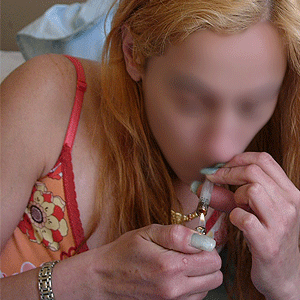
The idea of a few urban, white heroin junkies is something of the past. Heroin use is on the increase and the profile of the typical heroin user is changing.
"Heroin markets have changed significantly," says Prof Charles Parry of the Alcohol and Drug Abuse Research Group at the Medical Research Council. "Usually certain drugs are favoured by certain groups. For example, cocaine is more popular in white communities and mandrax is predominantly used on the Cape Flats. Certain drugs would also be more common in certain areas of the country. This no longer applies to heroin."
Both users and markets changing
An organisation which monitors drug use countrywide, the South African Community Epidemiology Network on Drug Use (SENDU) found that the distribution networks in South Africa have changed. Heroin use is no longer happening primarily in Cape Town and Gauteng. It is on the increase in Mpumalanga, Port Elizabeth and Durban – areas where heroin addiction was almost non-existent up to now.
In South Africa, heroin users tend to be white. But Parry predicts that this could change as heroin markets expand in South Africa.
This is already happening. Heroin is now marketed specifically in townships, making it more accessible to African users. Prices have also come down and it is far more affordable to lower income groups.
There are also changes in the number of men and women using the drug. More women are seeking treatment for heroin addiction than for any other drug addiction. Parry suspects that there are a lot more women abusing heroin than we think.
“There seems to be a greater stigma associated with drug dependence in females, and the abuse of illicit substances tends to remain hidden. In addition, women often do not have an independent income to pay for treatment. Nevertheless, about 20% to 40% of persons treated for heroin abuse are female,” says Parry.
The youth most vulnerable
Younger and younger South Africans are starting to use heroin. Heroin is primarily used by young adults between the ages of 20 and 25 years and for most of these users, heroin is their first drug of choice. If prevention measures fail, it is very likely that this could shift to an even younger group. Already the Chemical Dependency Unit at Crescent Clinic is treating children as young as 13 years for heroin addiction.
More spiking it up
In contrast to other countries, such as the USA, smoking is still the main mode of heroin use in South Africa.
Parry warns that we could expect an increase of intravenous (IV) use, which is far more addictive and potent than smoking. “Through regular administration, users may develop a high tolerance threshold for heroin’s effects. This may lead users to switch from smoking heroin to a more effective mode of administration, namely IV use. Possible deteriorations in the purity of heroin may also force users to switch to IV use.”
Little hope
The signs are there that heroin use may become a serious problem in South Africa. This is worrying news for several reasons. For one, heroin is the most habit-forming drug available. “Because heroin is so addictive physically, users get into the clutches of addiction far quicker than with other drugs. The functioning and morals of heroin users degenerate far quicker. Users will start stealing and lying early on to get enough money to pay for the drug,” explains Dr Rudolph Otto of the Chemical Dependency Unit at Crescent Clinic.
Very few heroin addicts manage to break the vicious cycle of addiction. Even with the best treatment, the majority of addicts relapse after a while.
South Africa is also not really equipped to offer treatment to the majority of heroin addicts. “Ideally, heroin should be treated on an in-patient basis,” says Grant Jardine, director of the Cape Town Drug Counselling Centre (CTDCC) which, because of limited funding, treats heroin addicts on an out-patient basis.
Heroin withdrawal is severe and could even be life-threatening. Patients need to be monitored very closely during this period and the withdrawal symptoms should be treated.
But very few patients have access to this kind of treatment and most need to brave the agonising withdrawal and recovery process on their own. Many state hospitals help patients detox, but don’t assist patients in recovery.
In-patient addiction treatment is available, but only at a few private hospitals, which very few people can afford. Because heroin addiction is so strong, the treatment period is usually a lot longer than for any other drug addiction. Very few medical aids are prepared to fund the optimum treatment period and most patients need to cut their visits short because their money runs out.
What now?
SENDU recommends prevention programmes, especially for the youth, the group most likely to become addicted.
But how would you know if someone has a problem?
Look out for the following suspicious signs/objects:
- Bent and blackened teaspoons
- Blackened tinfoil
- Matchbox covers
- Hypodermic syringes and needles
- Lemons or packets of citric acid
- Needle marks
- Unidentified tablets, capsules or syrups
- Tourniquet
If your suspicions are confirmed, get the person into treatment as soon as possible.




 Publications
Publications
 Partners
Partners














